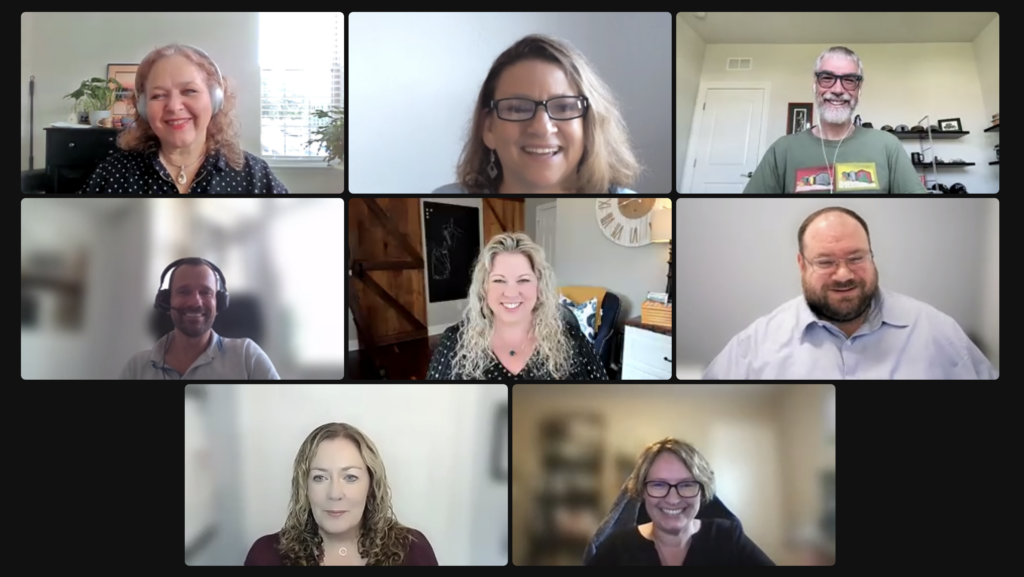In a recent live panel event, we lifted the veil of what it takes to gain mastery in agile coaching.
We invited leaders and agile coaches just like you to join us for a one-hour live discussion with agile coaches, TeamCatapult faculty, and a representative from ICAgile.
The event was well attended. While we are not publically sharing the recording of the panel discussion, there were many great insights shared and stories told.

Here is a short recap.
The Path to Mastery: What it Takes to Grow As An Agile Coach
In the live panel discussion, “The Path to Mastery: What it Takes to Grow as an Agile Coach,” hosted by TeamCatapult with moderators Marsah Acker and Antoinette Coetzee, panelists Marcel, Jennifer, Israel, and Shannon shared valuable insights into their experiences with the cohort and how it shaped their careers as Agile coaches.
How to Gain Mastery in Agile Coaching
The discussion began with Marsha providing background on TeamCatapult’s journey to bridge the gap between learning coaching skills and applying them effectively. The panelists represented different cohorts and locations, each bringing unique perspectives to the conversation.
When asked about the challenges of coaching Agile teams, participants in the chat mentioned issues like
- resistance to change
- lack of leadership support
- difficulties in understanding the role of a team coach
Israel emphasized the importance of helping teams understand the benefits of having a coach, while Marcel highlighted the need to build trust with teams and overcome initial resistance to change.
The panel discussion shed light on the transformative power of being part of a cohort.
Here are each of their stories.

Growth As An Agile Coach Through Mindset Shift
For Marcel Höppner, the cohort provided a transformative journey in developing a coaching stance. By receiving direct feedback and guidance, he experienced a mindset shift, realizing that his ego was sometimes hindering his ability to be an effective leader. This newfound awareness changed his view on leadership, making him more focused on helping others achieve success rather than just managing people.
Growth As An Agile Coach Through Deepening Coaching Skills
Jennifer Steelman, an experienced Scrum Master, found the cohort to be an excellent opportunity to deepen her coaching skills. She highlighted the significance of receiving feedback, practicing, and integrating coaching techniques into her everyday work. The cohort provided a space for her to explore both tactical and strategic objectives, resulting in increased confidence and clarity about her coaching approach.
Growth As An Agile Coach Through Gaining Confidence in Coaching
Israel Pattison, with a background in traditional project management, embraced the challenge of transitioning to Agile. He found that the cohort offered him invaluable support and feedback, helping him grow into a seasoned Agile coach. The experience not only expanded his coaching knowledge but also gave him the confidence to contribute to the organization’s strategic objectives and inspire others in the Agile mindset.
Gain Mastery in Agile Coaching Through a Structured and Proven Program
Lastly, Shannon Ewan, Managing Director for the International Consortium for Agile (ICAgile), emphasized the importance of creating a structured program like the cohort. Through regular supervision, participants had the opportunity to practice and integrate their coaching skills, building the confidence to positively impact teams and organizations.
The Immense Value of a Cohort
Panelists shared that joining a cohort provided a supportive community of peers, a safe environment for learning and growth, diverse perspectives for personal growth, a structured learning environment for skill development, and a deeper understanding of their coaching styles. Overall, being part of a cohort positively shaped their careers as Agile coaches, fostering continuous learning, and professional development.
Coaching Agility From Within Cohort
Our next Coaching Agility From Within Cohort kicks off in the Fall of 2023. We have one more LIVE panel event planned for those who missed this opportunity to learn more from former cohort participants.
This live event will take place on August 28 from 1-2 PM ET.
Your chance to learn more about our Coaching Agility from Within cohort starts here.



 What is an Effective Way to Develop Leaders?
What is an Effective Way to Develop Leaders?








